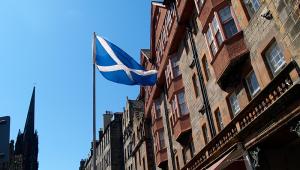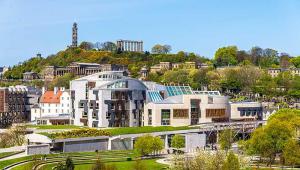The third budget of finance secretary Derek Mackay saw a further widening of the tax gap between Scotland and the rest of the UK, with the Scottish Government choosing not to replicate the decision of chancellor Philip Hammond to raise the higher rate income tax threshold to £50,000.
Instead, the salary at which Scots pay the 41p higher rate is to be frozen for a second year at £43,430 in a move expected to raise an extra £68m in revenue.
“At a time of constrained growth, prolonged austerity and growing economic uncertainty, all as a result of a failing UK government, now is not the time to cut tax for the highest earners at the expense of our public services,” Mackay told the Scottish Parliament on 12 December.
“Instead, I will be using the additional resources raised through my tax decisions to support our public services and ensure that our health service gets all of the additional money it was promised.”
The announcement of an extra £730m for health and social care, a real-terms increase of 3.4% for the sector, will bring the health budget to over 49% of total resource spend.
David Eiser, who leads the Fraser of Allander Institute’s work on fiscal policy, told delegates at the institute’s budget briefing in Edinburgh that, given the Scottish budget was either flat or increasing very marginally in real terms, the decision to pump more money into health would inevitably come at the expense of local government.
“Most other spending lines are fairly small in comparison, and this is why the local government core settlement always bears the brunt,” he said.
Income tax revenues are expected to be £0.5bn higher under the new five-band system introduced last year than if the Scottish Government had adopted the same approach as the rest of the UK. However, those revenues would be undermined Scotland’s weak underlying tax base, driven by poor wage growth.
He also warned that the publication of income tax outturn data would herald funding gaps in the last two budgets of this parliament. These would have to be plugged by spending cuts, borrowing, or recourse to the depleted Scotland reserve.
The assignation of VAT revenues, which will start to have spending implications in the next financial year, also represented a “real risk” to the Scottish budget, as VAT revenues are forecast to grow more slowly north of the border than across the UK as a whole, he said. “If that is borne out, the assignment of VAT will be a drag on the Scottish budget, not a benefit,” he added.
The negotiations are playing out against sombre projections over the future of the Scottish economy, with one of the main drivers being productivity. The past decade has seen weak productivity for the UK, and Scotland is performing slightly worse than the UK as a whole.
Among economists, views differ as to whether the Scottish economy is operating above or below capacity – a judgment that is critical in predicting future performance.
According to the Scottish Fiscal Commission, the recent upturn in key economic indicators points to faster economic growth in 2019, but this may not be sustained.
“There is little change in the longer term, when we expect the economic prospects for Scotland to remain subdued,” said commission chair Susan Rice.
However, the Fraser of Allander Institute took a more positive view, arguing that the economy is operating slightly below capacity and therefore has the opportunity to catch up.
“We believe employment data is hiding a lot of slack, and that investment is being held back by Brexit uncertainty,” said institute director Graeme Roy.










